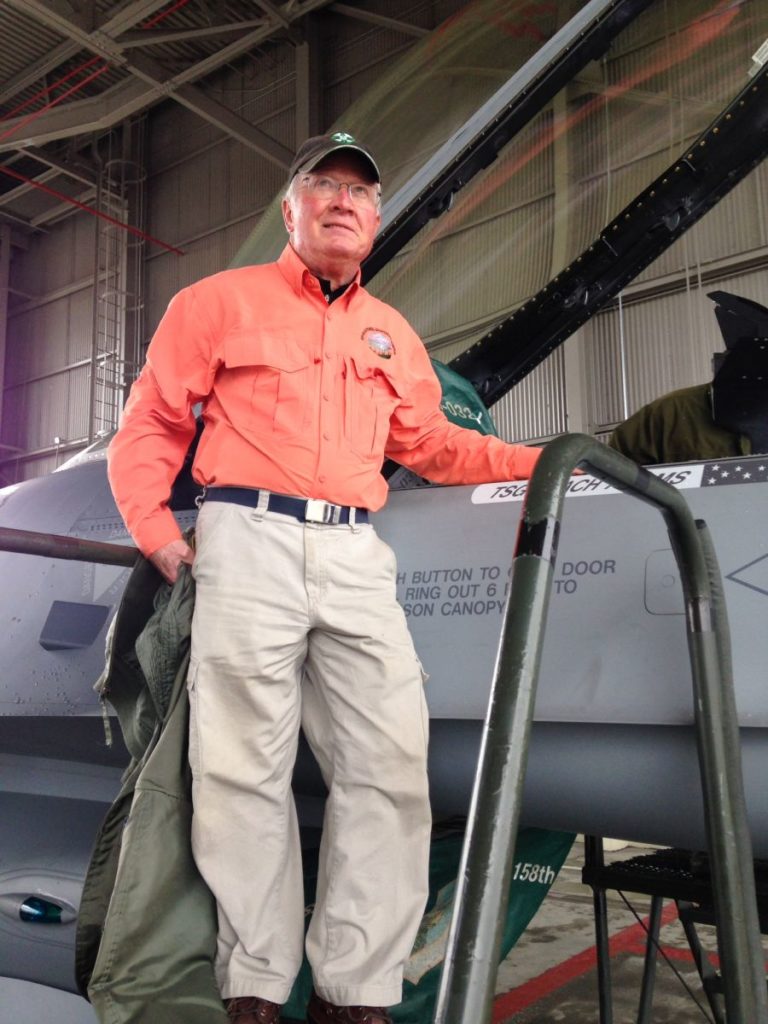VERMONT AIR NATIONAL GUARD FLY-IN SAFETY SEMINAR
Bob Burley, Recreational Aviation Foundation (RAF) Vermont Liaison, attended a Facility Tour and Safety Briefing hosted by Vermont Air National Guard 158th Fighting Wing in April at Burlington International Airport (KBTV).
“Backcountry operations are a primary focus of the RAF,” Burley said, “and pilots can encounter Military Operations Areas (MOAs) and Military Training Routes (MTRs). Both GA and the military share the obligation for safe operations,” he added.
Aviators from New England and the New York area were invited to expand public awareness and safety in northeast airspace. Approximately 80 attended the “extremely informative, interactive and superbly organized event,” said Burley. “Officers and enlisted personnel were extremely knowledgeable and detailed key aspects of operations in or near military airspace for us.”

KBTV is a commercial, military and GA facility. The 158th FW is the major training facility for all US ANG F-16 units. Attendees were granted access to the restricted simulator facility and 45-minute briefing. “Inclined attendees experienced a few thrilling minutes in the F-16 simulators,” Burley said.
Here he summarizes the main points of the presentation:
- Go under, over or around “hot” MOAs and MTRs. Fly defensively. Communicate with ATC.
- MOAs/MTRs are exempt from the 250 kt speed limit below 10,000‘ MSL.
- The cockpit data barrage in military aircraft is massive. Mission profiles are complex and constantly changing. Do not assume they will see you. They are managing a lot more complexity than the typical GA pilot.
- Situational Awareness is your responsibility. MOA/TRs are “owned” by designated military units. Know who they are before you fly. Check sectionals and databases for frequencies, altitudes and times. Most units have schedules for their operations. Night ops also occur. Sorties can occur at dawn, daylight or dusk.
- Know the MOA/MTR mission profile before transiting. Check NOTAMS and TFRs for activity times (tfr.faa.gov). Check military unit website(s). Call ATC before penetration. Unless Center has given you a squawk code, use 1200 and monitor ATC or controlling agency frequency for activity.
- MOA/MTR speeds can vary from hovering to over 500kts. Some MOAs involve parachute, dummy, live fire, drops and salvos. Expect single aircraft or formations of up to 5 nm wide. ALL are possible.
- Burley reminds us that Radar is line of sight. In mountainous terrain there are many ATC coverage gaps. If radar can’t see you, you don’t exist.
- Military aircraft may have IFF interrogators and/or TCAS but you won’t know. Feeds from ATC to either GA or military aircraft may experience up to 30 second latency. On-board screens may not refresh fast enough.
- He adds this bit of simple wisdom: “Situational Awareness is your responsibility: Confucius say: The shrike hunting the locust should be aware the hawk hunting him.”
Submitted on April 18, 2016.
